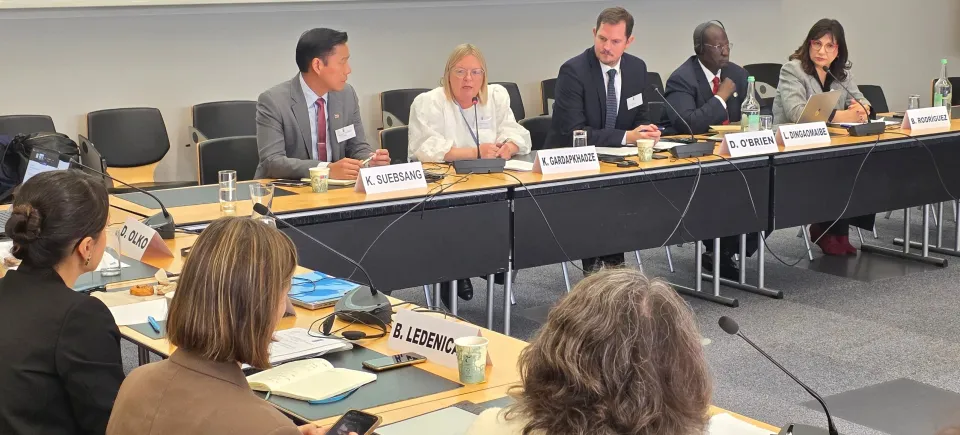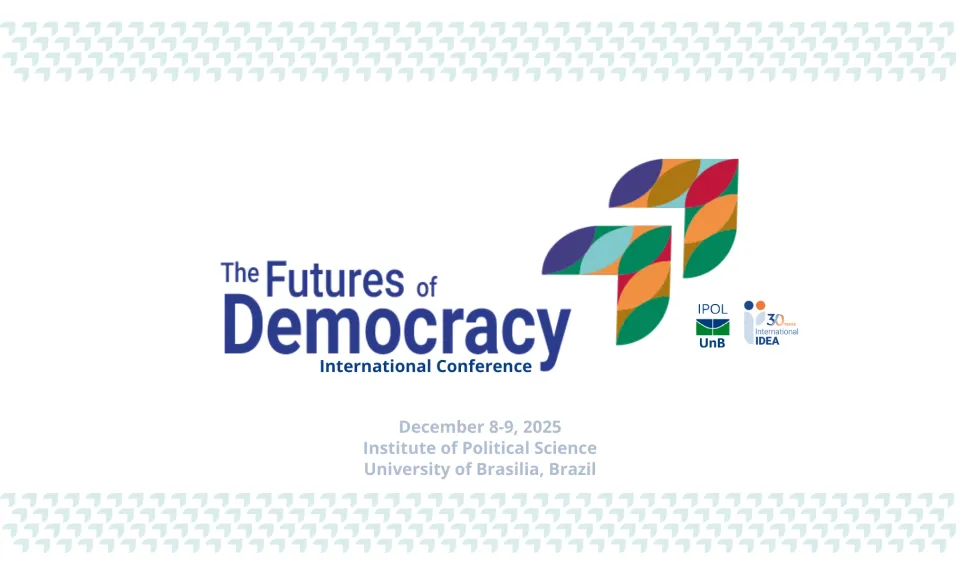Protests, Emergency Powers, and Democracy: Hard Choices in Canada

Disclaimer: Views expressed in this commentary are those of the author. This commentary is independent of specific national or political interests. Views expressed do not necessarily represent the institutional position of International IDEA, its Board of Advisers or its Council of Member States.
On 14 February 2021, many observers around the world were shocked to hear that the Canadian government had invoked its Emergencies Act to deal with a peaceful (but unlawful) protest in Ottawa. This was the first time that the Act had ever been used, and only the fourth invocation of emergency powers in Canadian history.
Canada prides itself on its reputation as a peaceful and orderly country that upholds democracy and the rule of law. The idea that the government might be contemplating heavy-handed uses of the physical, legal and financial tools of the state against protestors was quite troubling. Protestors were arrested or otherwise removed from the streets of the capital without significant violence from either side.
What led the Canadian government to invoke the Emergencies Act? The simplest explanation is that the local and provincial governments failed to act, leaving it to the federal government to resolve the situation. The federal response was to choose the largest legal hammer in its toolbox, but to swing it lightly. However, the protest and the various responses to it have important implications for the future of Canadian democracy.
The Convoy
On 23 January 2022, a “Freedom Convoy” featuring tractor trailers and other vehicles departed Vancouver, heading to Ottawa (4,500 km to the east) ostensibly to protest a requirement that unvaccinated truck drivers who travel across the border into the United States of America must quarantine on their return to Canada. As the convoy travelled, the movement grew into a larger and less focused symbol of fatigue with Covid-19 restrictions and anger towards the Liberal Party government led by Justin Trudeau. Supporters ranged from the extreme right (including white supremacists) to relatively non-political people who expressed economic concerns about the Covid-19 response. By 29 January , hundreds of tractor trailers and other vehicles had been parked on the street in front of the houses of Parliament and other areas of downtown Ottawa, effectively shutting down that part of the city.
Alongside the protest in Ottawa, other groups blockaded border crossings in Ontario, Manitoba and Alberta. These blockades varied in their significance and duration. The blockade at the border crossing in Coutts, Alberta is notable due to the potential for violence at that location. Police seized 13 firearms from three trailers at that protest, and charged four individuals with conspiracy to murder. The border crossing blockade in Ontario was the most economically damaging. The six-day blockade of the Ambassador Bridge is estimated to have stalled billions of dollars in trade.
A Lack of Early Action
In Ottawa, first the city, then the province declared a state of emergency – but took little action to dislodge the protestors. It was then that the federal government stepped in. The apparent threat to Canada’s institutions and economy was quite high, but the invocation of the Emergencies Act for the first time was a truly extraordinary step to take. As Carleton University law professor Leah West wrote on Twitter: “a failure to enforce the law by [two] levels of government created a crisis that the [third] had to contort the law to end.” There was no simple explanation for this failure to act earlier. The chief of the city police force in Ottawa suggested that any move to end the protest would risk escalating the situation. A week after the protest arrived in the city, he stated: “The longer this goes on, the more I am convinced there may not be a police solution to this demonstration.” Shortly after the federal government invoked the Emergencies Act, the police chief resigned.
The Emergencies Act gives the federal government an immense amount of power, including the ability to compel the assistance of members of the public (e.g. tow truck drivers) and to freeze bank accounts used to support the protest without seeking the approval of a court. This last point is the main one that distinguishes the federal emergency from a provincial one. Introducing the new measures taken under the Emergencies Act, the Minister of Finance, Chrystia Freeland stated that: “We are broadening the scope of Canada’s anti-money laundering and terrorist financing rules so that they cover crowdfunding platforms and the payment service providers they use. These changes cover all forms of transactions, including digital assets such as cryptocurrencies.” The government made it clear that any physical or financial asset used to support the protest would be liable to be seized or frozen.
Justified?
The key question in the invocation of the Emergencies Act concerns its legal justifiability. There has been some disagreement among legal experts. In the government’s view, there existed an “emergency that arises from threats to the security of Canada and that is so serious as to be a national emergency” and which “cannot be effectively dealt with under any other law of Canada.” The meaning of a threat to the security of Canada is defined in another piece of legislation, and includes (1) espionage or sabotage, (2) foreign influenced activities that are clandestine, deceptive, or involve threats, (3) threats or acts of serious violence, or (4) activities directed toward undermining the constitutionally established government. The Canadian Civil Liberties Association has argued that these levels of threat to the security of Canada were not met by this protest, and announced its intention to pursue litigation against the government in this matter.
The Act requires a debate in Parliament within seven days of the declaration of the emergency. This duly took place, with strong opposition expressed by the Conservative Party and Bloc Quebecois, and weak support from the New Democratic Party. The government described the vote on approving the use of the Emergencies Act as having the effects of a confidence vote, meaning that the government would fall if the vote failed to pass. This may have weighed in the New Democratic Party’s support for the government, as all parties seem keen to avoid an election at this juncture.
The situation as it stands on 23 February 2022 is that a public order emergency is in effect, and will remain so as long as the government can retain the support of a majority in the House of Commons and the Senate for such measures. In a press conference on the day of the first vote on the subject in the House of Commons, Prime Minister Trudeau argued that protestors remain near Ottawa, waiting for a chance to return. The tools available to the government under the Emergencies Act can prevent that from happening.
The Future of Canadian Democracy
The significance of the whole episode for democracy in Canada is at least two-fold. First, it may be an important moment that dictates the direction that the political right in Canada will take. For many years, Canada appeared to have been able to resist the wave of right-wing populism that had swept many similar Western democracies. While this protest was in absolute numbers quite small, it did enjoy the support of approximately one-quarter of Canadians.
The Conservative Party faced internal turmoil around how to respond to the protest, which reached such a severity that the party caucus removed its leader, Erin O’Toole. O’Toole’s tepid engagement with the protest movement neither reassured the centrist wing nor satisfied the right wing of the party. The Conservatives will now have to choose a new leader in the post-emergency period. The party is likely to face a critical choice regarding its ideological future. Will it try to retain supporters on the far right who might otherwise find a new home in the People’s Party of Canada, or will it track back toward the center as it often has in the past?
Secondly, the government’s response is somewhat ambivalent with regard to fundamental rights and democratic principles. The declaration of a public order emergency does not seem to be fully justifiable, and resort to such measures absent necessity sets a very negative precedent. However, the actions that the government has taken under that emergency have been peaceful, orderly and legal. There were no scenes of police brutality on the streets of Ottawa reported. But there is a longer-term context to these critical events.
International IDEA’s Global State of Democracy Indices show that Canada’s performance in Checks on Government has been declining in recent years. An incident such as this in which both Checks on Government and Civil Liberties are threatened has the potential to worsen this trend, especially if the emergency is prolonged or involves undue restrictions on fundamental rights.




